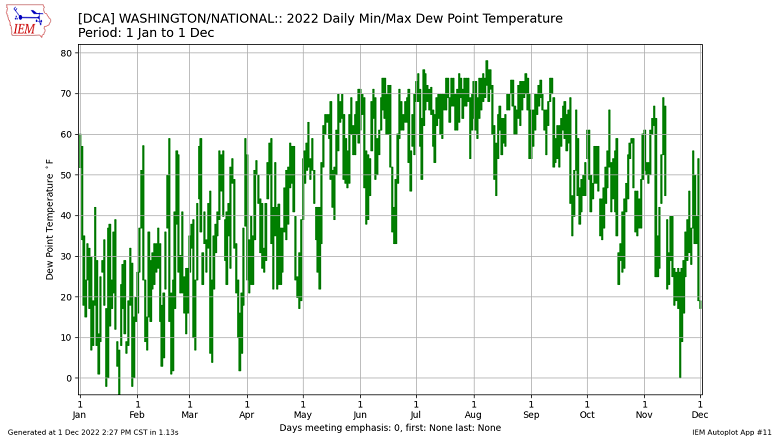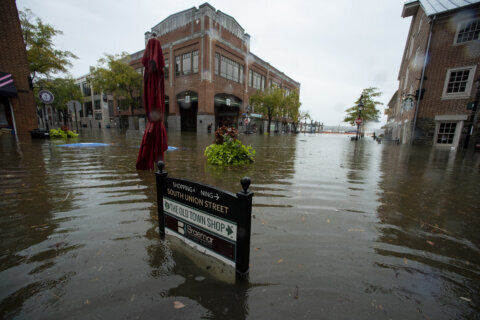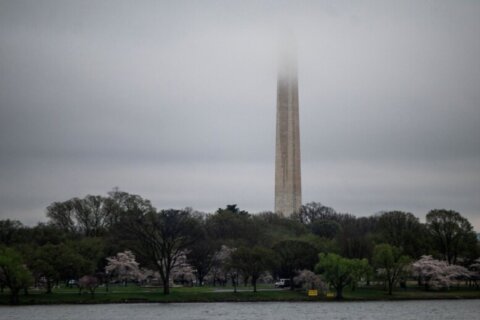Just as the D.C. area slides into the first month of meteorological winter, Mother Nature is right on cue with a cold, dry air mass spreading across the region.
While the weather will be anything but consistent through next week, one thing remains certain: The coldest, driest air of the season is still ahead of us, and it can be troublesome for some folks.
Dew points dropped into the upper teens late Thursday across Washington, the lowest since March. Dew point is a reliable measure of moisture in the atmosphere, and the current air mass resembles one that Washington usually doesn’t experience until deeper into the winter as seen in the graph below.

Dry air quickly dries bronchial tubes, and those with asthma and symptoms of bronchitis will have a more difficult time staying comfortable. Buying a humidifier could make you feel more comfortable.
Dry air can also cause inflammation in your throat, and even if you don’t have a head cold, you can wake up with a sore throat. The remedy here is the same as those with respiratory ailments: Put a humidifier in your room at night. It will add moisture to the air and raise the humidity levels.
A Canadian or Arctic air mass can also trigger eye irritation. In your home office or room, a humidifier will do the trick to keep your eyes from drying out. Dry air can tear the film that protects your cornea from damage.
You may notice your skin dries out and cracks after washing your hands frequently. You’ll probably find yourself using more hand lotion to avoid the discomfort of cracked and potentially bleeding hands.
It may seem far-fetched, but nosebleeds and dehydration can occur in an environment with low humidity. Most people associate dehydration with profuse sweating in a hot, humid environment but dry air can deplete your body fluids because of the rapid evaporation of moisture from the surface of your skin. Drink plenty of water and keep close to the humidifier to remedy these problems.
Keep these symptoms and solutions in mind as we dig into the coldest three months of the season. An unseasonably warm air mass through late March can also cause the humidity to tank, because winter to early spring dew points don’t rise nearly as fast as temperatures. So, we’re not out of the woods for low humidity problems until the growing season gets underway.








